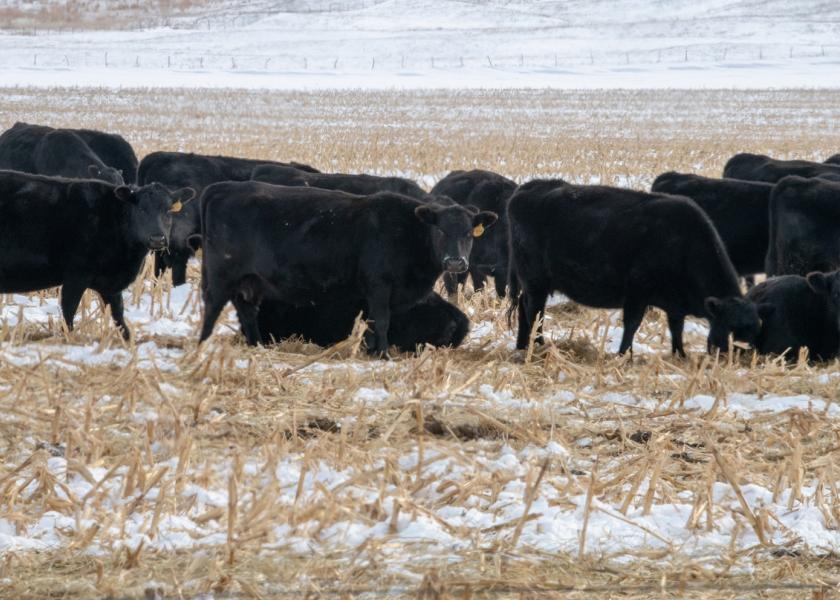Exercise Caution When Grazing Cattle on Drought Stressed Cornstalks

Cornstalk residue is a tremendous resource for fall and winter grazing; however, this year care needs to be taken in grazing drought stressed cornstalks due to the potential of high nitrates in the feed.
Cattle prefer and will select the grain as well as leaves and husk first which tend to be lower in nitrates. Because drought stressed corn is smaller and stunted, it is more likely that cattle will eat lower into the stalk where nitrate levels may be high. Nitrates are usually more concentrated in the bottom third of the stalk in the corn plant.
High nitrates may not only be an issue in dryland acres but also on irrigated corn edges and in the corners where adequate water hasn't reached and plants are stunted. Cattle tend to prefer these drought stressed plants when grazing. There is the potential that cattle could seek out those plants when first turned onto a pivot-irrigated field.
Due to the shortage of feed this year producers are more likely to leave cows grazing cornstalks longer than they normally would to try to stretch feed resources. Forcing cows to eat more of the stalks increases the risk that they will be consuming parts of the corn plant that could be high in nitrates.
Following are suggestions for grazing potentially high nitrate cornstalks:
1. Don't turn cows into drought stressed cornstalks hungry. Make sure the cows are full as this will help them adjust.
2. Consider fencing out pivot corners and edges where plants are severely stressed.
3. Resist the temptation to leave cattle on corn stalks after they have eaten most of the leaves and husks. Avoid forcing the cattle to consume more of the potentially high nitrate stalks.
4. Feeding additional supplemental energy (2 pounds of corn per head per day) on areas where nitrates could be at higher levels can help reduce risk of nitrate poisoning by giving the rumen microbes the energy they need to increases the rate of detoxification.
More information on utilizing high nitrate forages can be found in the University of Nebraska-Lincoln's What to do with High Nitrate Forages? article.
The amount of cornstalk forage available for grazing is likely to be below average this year in many parts of the state due to lower yields. The volume of leaves and husks produced are directly correlated with the grain yield. For more information on estimating the amount of grazing available in a cornfield based on grain yield, see the UNL Corn Stalk Grazing Calculator.







